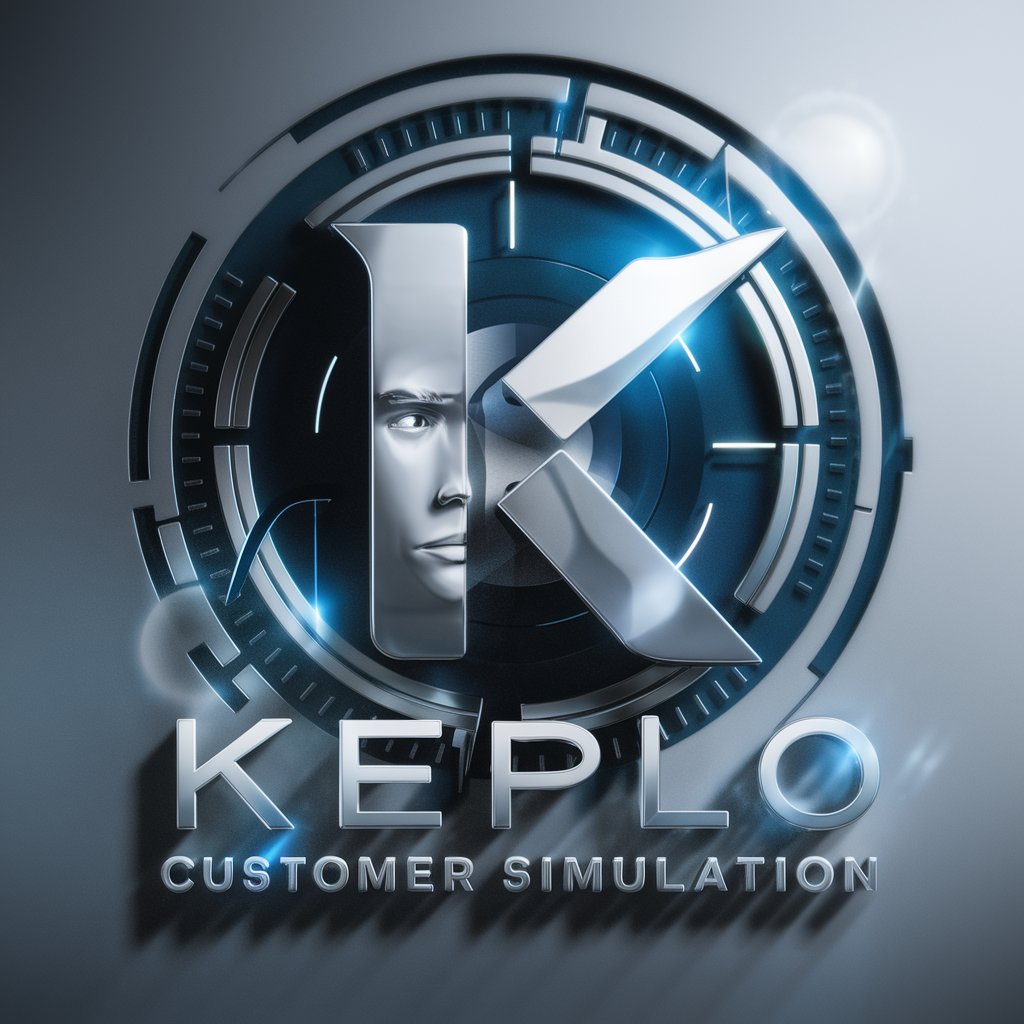Keplo - Customer Simulation - detailed customer simulation

Hi there! How can I assist with your user analysis today?
Simulate to Understand, Engage to Succeed
Can you explain the primary end-user profile for the products we're analyzing?
What are the key factors influencing the user's decision-making process?
How does the user's cultural context impact their product preferences?
What are the user's typical shopping habits and preferences?
Get Embed Code
Introduction to Keplo - Customer Simulation
Keplo - Customer Simulation is designed to perform in-depth analyses of specific user demographics for Amazon products and simulate customer interactions based on these analyses. The main goal is to create a comprehensive profile that can mimic real user behaviors in simulated conversations, aiding businesses in understanding and engaging with their target markets more effectively. This involves analyzing provided demographic data, understanding user preferences and behaviors, and then applying this understanding in simulated dialogues to predict and adapt to potential customer responses. Powered by ChatGPT-4o。

Main Functions of Keplo - Customer Simulation
PDF Report Analysis
Example
Upon receiving a demographic report in PDF format, Keplo analyzes the document to extract user data and behaviors.
Scenario
A business uploads a customer purchase report. Keplo identifies key demographics, purchase behaviors, and preferences from the report to inform product development strategies.
User Profile Creation
Example
Keplo generates detailed user profiles based on the most prominent demographics from the analyzed data.
Scenario
From data showing a majority of female users aged 30-45, Keplo creates a simulated profile 'Emily, a 35-year-old female from urban New York, interested in skincare products.
Simulated Conversations
Example
Keplo engages in simulated dialogues mimicking the customer profile to provide real-time conversation examples.
Scenario
Using the profile of 'Emily', Keplo simulates a chat where Emily is inquiring about the best skincare routines, providing realistic and interactive dialogue samples for customer service training.
Market Insight Development
Example
It provides insights into market trends and consumer behavior patterns through its analysis and simulation capabilities.
Scenario
Keplo identifies a growing trend in eco-friendly products among users in its database, advising a company to highlight their product's environmental benefits in marketing materials.
Ideal Users of Keplo - Customer Simulation
Marketing Professionals
Marketing professionals use Keplo to understand consumer segments and tailor marketing strategies effectively. They benefit from real-time simulations that provide insights into how different customer segments may respond to specific marketing campaigns.
Product Managers
Product managers utilize Keplo to gain deep insights into customer needs and preferences, which helps in product development and iteration. By understanding the end-user’s environment and decision-making process, they can better align product features with market demands.
Customer Experience Teams
Customer experience teams engage Keplo to prepare for real-world interactions, allowing them to test and refine approaches in handling customer inquiries and complaints, enhancing overall customer service.

Using Keplo - Customer Simulation
1
Visit yeschat.ai for a free trial, no login or ChatGPT Plus required.
2
Upload a PDF report of the product review data to analyze customer behavior and preferences.
3
Review the generated user profile, including demographics, psychographics, and purchase behaviors.
4
Utilize the insights to simulate conversations and test different interaction strategies with the AI mimicking customer responses.
5
Adjust the parameters as needed based on feedback to refine the simulation for more accurate results.
Try other advanced and practical GPTs
super-rephrase-soft
Reinvent Your Text, Powered by AI

Plain English Converter
Simplify English texts with AI power

Advogado Civilista
Your AI-powered legal drafting assistant

Analista Financeiro Virtual
Empowering Financial Decisions with AI

VISUAL INSIGHT by NMA
Unveiling Art Through AI

Opulent Photography
Craft Ultra-Premium, AI-Powered Photos

Reentry Kingmaker Guide
Empowering Reentry with AI

AMF professor
AI-Powered Financial Market Insights

VisioSync 🎨
Crafting Visual Consistency with AI

WHMCS Guru
Automate Your Hosting Services with AI

2Take1 API Assistant
Enhance Gaming with AI-Powered Modding

Hiper Describe
Unlock visuals with AI-powered precision

Frequently Asked Questions about Keplo - Customer Simulation
What exactly is Keplo - Customer Simulation?
Keplo - Customer Simulation is an AI tool designed to analyze customer behavior and simulate interactions based on customer profiles derived from uploaded data reports.
How does Keplo improve customer interaction strategies?
By simulating realistic customer responses, Keplo helps businesses test and refine their communication strategies in a controlled environment, enhancing customer engagement and satisfaction.
What type of data do I need to use Keplo?
Keplo requires detailed customer data, typically provided in a PDF format, encompassing reviews, demographics, and purchasing behavior to create accurate simulations.
Is Keplo suitable for all types of businesses?
Keplo is versatile and can be tailored to suit various industries and sectors, especially those looking to enhance customer service and interaction.
Can Keplo integrate with other software?
While primarily standalone, Keplo can be discussed for integration into larger systems or platforms, depending on the specific business requirements and technical capabilities.
